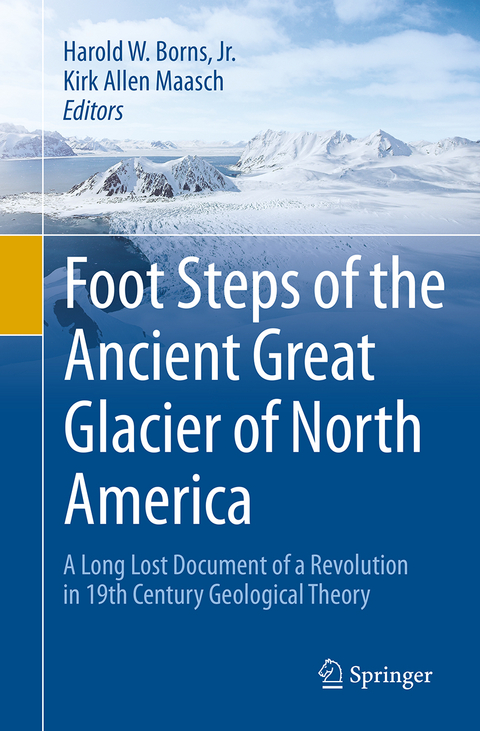
Foot Steps of the Ancient Great Glacier of North America
Springer International Publishing (Verlag)
978-3-319-37941-8 (ISBN)
Harold William Borns, Jr. is Professor Emeritus of Glacial and Quaternary Geology at the University of Maine. He has taught geology for 50 years and in retirement has continued Ice Age field research projects in Maine, Denmark and Ireland. Professor Borns has had published about 150 peer-reviewed scientific journal articles, made many geological maps for the Maine Geological Survey and has co-authored one book on the Ice Age. He spent 28 field seasons leading glacial geological research teams in Antarctica and served as Program Manager for Polar Glaciology in the Office of Polar Programs at the U.S. National Science Foundation for three years. He formed the "Climate Change Institute" at the University of Maine in 1973 and served as its director for the first 15 years. Kirk Allen Maasch is Professor of Climate Studies at the School of Earth and Climate Sciences and the Climate Change Institute at the University of Maine. He has had published over 60 peer-reviewed scientific journal articles and book chapters, and has co-edited one book on climate and culture.
Part I John Kimball DeLaski.- Biographical sketch.- The manuscript.- Part II The Ancient Great Glacier of North America.- Preface.- The phenomena of boulder drift.- Carver's Harbor.- Research on rocks.- Vinalhaven and North Haven.- Camden Hills and Mount Desert.- Mount Desert to Holden.- Bangor to the Piscataquis Valley.- Mount Katahdin.- The inescapable conclusion - A large glacier.- Evidence from all over North America.- Boulder drift theories.- Objection to iceberg theory continued.- An astronomical theory.- Astronomical theory continued.- Theory of mutable axis of the earth.- Continental upheaval and subsidence.- The changeable relations of land and water.- Supposed cause of the cold period.- Geologic record since the Devonian.- The climate cools.- A glacial time.- Duration of the glacial age.- End of the glacial age.- On the motion of glaciers.- Purpose of the glacier.- Late-glacial cold-water marine shells of Maine and adjacent regions.
"This book is a treasure for natural scientists interested in the emergence of 19th-century thought. Summing Up: Recommended. Graduate students and researchers/faculty." (J. D. Ives, Choice, Vol. 53 (1), September, 2015)
| Erscheinungsdatum | 14.10.2016 |
|---|---|
| Zusatzinfo | X, 202 p. 8 illus. |
| Verlagsort | Cham |
| Sprache | englisch |
| Maße | 155 x 235 mm |
| Themenwelt | Naturwissenschaften ► Biologie ► Ökologie / Naturschutz |
| Naturwissenschaften ► Geowissenschaften ► Geologie | |
| Naturwissenschaften ► Geowissenschaften ► Mineralogie / Paläontologie | |
| Schlagworte | Biblical Flood • climate change • Continental Glaciation • Earth and Environmental Science • earth sciences • Glaciation • Glaciation Early Interpretation • historical geology • History of Science • Maine Glaciation • Nature and the natural world: general interest • New Brunswick Glaciation • Popular Science in Nature and Environment • Valley Glaciation |
| ISBN-10 | 3-319-37941-0 / 3319379410 |
| ISBN-13 | 978-3-319-37941-8 / 9783319379418 |
| Zustand | Neuware |
| Haben Sie eine Frage zum Produkt? |
aus dem Bereich


